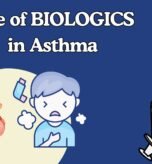Tuberculosis is a droplet infection caused by a bacteria called Mycobacterium tuberculosis. IT spreads by inhaling droplets produced by an infected person when he/she coughs and releases bacteria in small droplets in the air. This is also called an aerosol infection
Tuberculosis is spread by aerosol or droplet infection
Identifying close contacts of a person with tuberculosis is extremely important to prevent development of active disease. Here we try to explain who can possibly spread tuberculosis, who is at risk of acquiring tuberculosis and how to prevent active TB disease.
Who is at risk of spreading tuberculosis infection?
Index case :
– Individual with tuberculosis who can spread the infection to other contacts around him/her.
– Person with pulmonary tuberculosis, especially sputum positive case
– Person with MDR-TB/ DR-TB (Drug resistant TB)
– Person with HIV
– Child< 5years with tuberculosis
Who is at risk of TB Infection?
Contact: Exposure to an index case is called contact. Contact can be intense where exposure is for prolonged periods like when sharing the same household or workplace, or it can be casual like in public spaces for short duration of time.
Household contact: A person who shared the same enclosed living space with the index case for >1 nights or for frequent or extended periods during the day in last 3 months prior to diagnosis of index case.
All children and adults who are household contacts of any index case must be evaluated for TB infection.
What is latent TB?
The tuberculosis bacteria enters the respiratory system and lodges itself in the lung. From here it can either cause active TB disease producing pulmonary symptoms, or it can migrate to other organs and cause symptoms in other systems.
Sometimes the bacteria may remain inactive or dormant in the lungs for for up to 2 years. In this case the person is infected with tuberculosis but does not have active disease. This type of infection is called LATENT TB.
An individual with latent TB is at risk of having active TB disease at any time.
What are the tests for TB infection?
If the child has symptoms like fever, cough or loss of weight, then active TB disease needs to be ruled out by checking any abnormality on chest X-ray. In case of abdominal TB or other organ system TB, relevant investigations like abdominal ultrasound are required. If investigations are suggestive of TB disease, further testing for microbiological diagnosis are done and treatment for TB infection is started.
In the absence of clinical symptoms and any abnormality on chest X-ray, active TB disease is ruled out and only TB prophylaxis is required.
In children with HIV, TB infection must be ruled out and TB preventive treatment must be started in all cases.
What is TB Prophylaxis?
WHO as well as the Indian National TB Elimination program recommends Isoniazid or INH prophylaxis for 6 months for all household close contact of TB infected person irrespective of age. This is especially true where the index case has pulmonary TB. In case the contact doesn’t know about the pulmonary TB status of index case, giving prophylaxis is better than no prophylaxis.
Why do we need TB prophylaxis?
Latent TB infection can lead to TB disease by reactivation and that poses a high burden especially in high-endemic countries like India. In order to achieve our goal of TB elimination, TB prophylaxis for latent TB is very important. INH prophylaxis will prevent latent TB infection where your child is asymptomatic and healthy, to progress to active TB disease.




